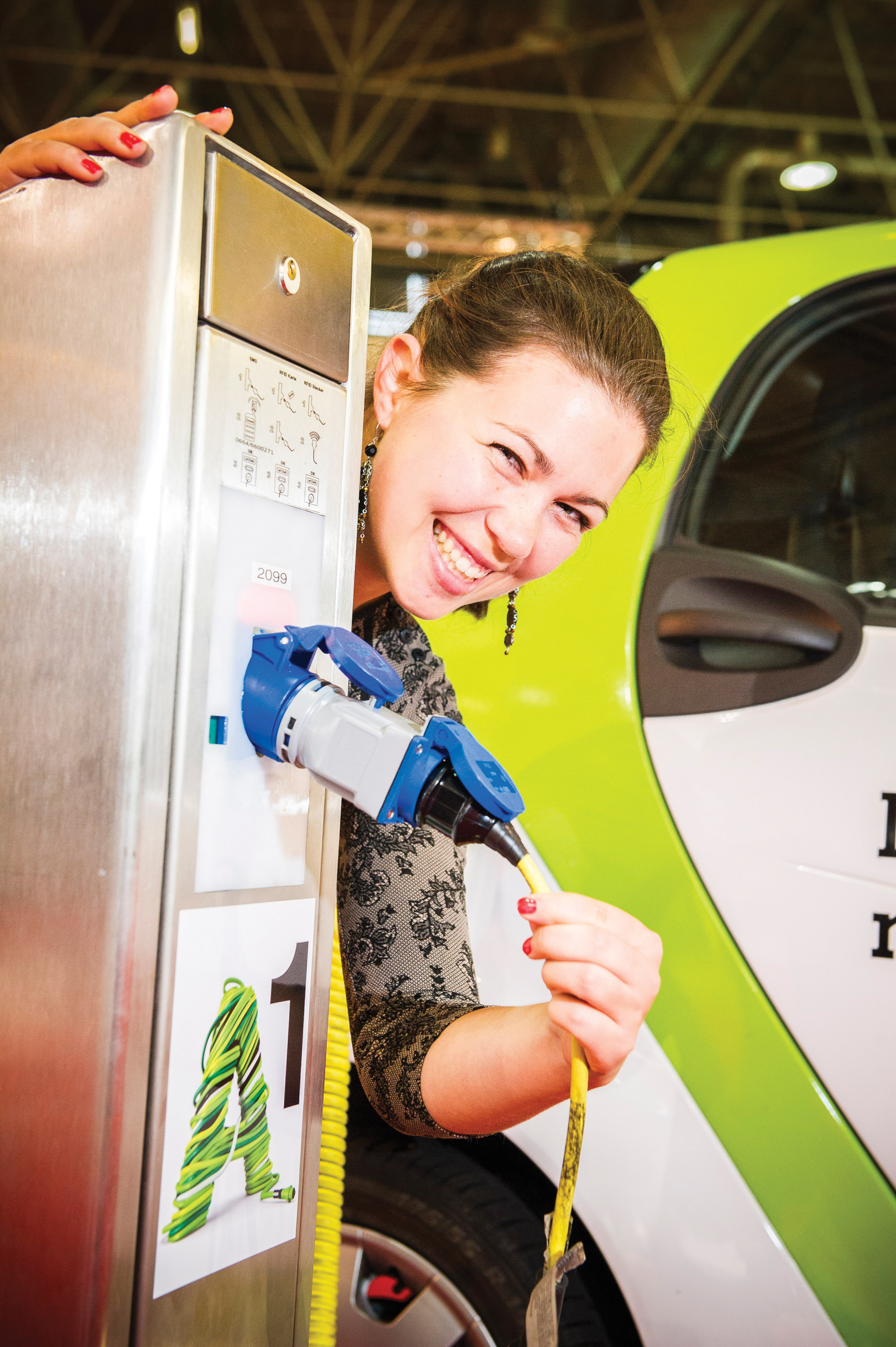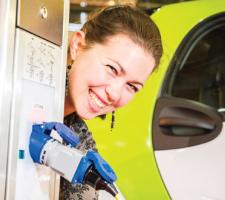
Julia Holbock shows off M2M's plans
Telekom Austria Group M2M and its partner consortium is working to develop a complete infrastructure for the charging of Electric Vehicles (EVs) which includes navigation, billing and authorisation, load management and balancing, and reservations (including reservation with payment in order to stop charging point blocking).
The group started work to realise a national network in 2010 and at present there are around 30 charging points nationally. Some are free-standing, although in order to make best possible use of existing infrastructure some have been combined with phone booths; nationally, around 15 per cent of the country’s 15,000 phone booths are anticipated to be well-placed to also serve as EV fuelling points.
“Two years ago we saw a lot of hype pertaining to EVs, then a bit of a slow-down. But OEMs’ development cycles take between five and seven years, and we’re now starting to see EVs emerge at a price point which are accessible to more than just the early adopters,” says Friedrich Vogel of the partner consortium. “Once serial production starts, marketing of EVs will follow and at around 2013/14 I expect to see a tipping point for e-Mobility.
“At that point, if I have a car that can offer 500km with a range extender or 100km on battery, with less pollution and tax, why am I going to buy a hydrocarbon car? But if we don’t have the charging infrastructure in place, acceptance and adoption will be much lower.”
The group started work to realise a national network in 2010 and at present there are around 30 charging points nationally. Some are free-standing, although in order to make best possible use of existing infrastructure some have been combined with phone booths; nationally, around 15 per cent of the country’s 15,000 phone booths are anticipated to be well-placed to also serve as EV fuelling points.
“Two years ago we saw a lot of hype pertaining to EVs, then a bit of a slow-down. But OEMs’ development cycles take between five and seven years, and we’re now starting to see EVs emerge at a price point which are accessible to more than just the early adopters,” says Friedrich Vogel of the partner consortium. “Once serial production starts, marketing of EVs will follow and at around 2013/14 I expect to see a tipping point for e-Mobility.
“At that point, if I have a car that can offer 500km with a range extender or 100km on battery, with less pollution and tax, why am I going to buy a hydrocarbon car? But if we don’t have the charging infrastructure in place, acceptance and adoption will be much lower.”
<%$Linker:






